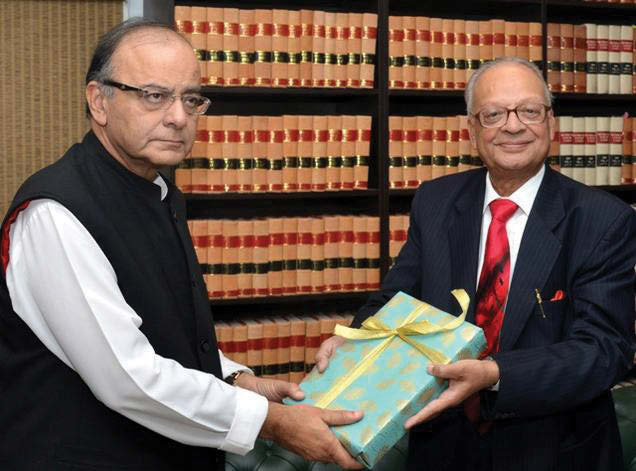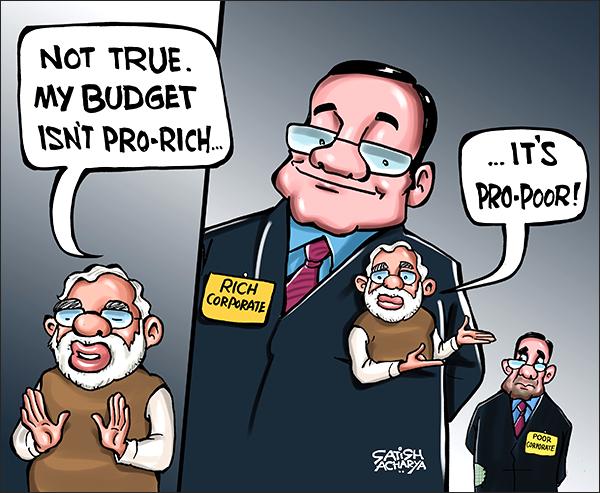
NEW DELHI (TIP): In its report submitted to the Union Finance Minister Arun Jaitley on November 19, the Seventh Central Pay Commission has recommended an overall increase of 23.55 per cent in pay, allowances, and pension for government employees. Within this, the Commission’s report recommends a 16 per cent increase in basic pay, a 63 per cent increase in allowances and a 24 per cent hike in pension. The recommendations are to come into force on January 1, 2016.
“This will impact 47 lakh employees and 52 lakh pensioners. The total monetary impact on the central government would be Rs 1.02 lakh crore. Around Rs 74,000 crore would be the impact on the Union Budget and Rs 28,000 crore on the Railway Budget,” Mr Jaitley said at his residence after he received the report from Justice A.K. Mathur, Chairperson of the Commission. Mr Jaitley said the impact of the recommendations amounts to 0.6 per cent of GDP, adding that while the government would review the report soon, the State governments would take their own view on it.
The report also recommends an annual increment of 3 per cent in basic pay.
Significantly, the report has recommended a one-rank one-scheme for all government employees, including military personnel. “The Commission recommends a revised pension formulation for civil employees including CAPF personnel as well as for Defence personnel, who have retired before January 1, 2016. This formulation will bring about parity between past pensioners and current retirees for the same length of service in the pay scale at the time of retirement,” Justice Mathur explained.
Past pensioners will first be placed in the proposed pay matrix on the basis of where they stood in the existing pay band and pay grade structure when they retired. This amount is to be raised to arrive at the notional pay of retirees, taking into account the number of increments they earned in that level while in service at the rate of 3 per cent. Defence forces personnel will also receive Military Service Pay as admissible.
Fifty per cent of the total amount arrived at in this manner will be the new pension, the report said.
Grade pay abolished
“Considering the issues raised regarding the Grade Pay structure and with a view to bring in greater transparency, the present system of pay bands and grade pay has been dispensed with and a new pay matrix has been designed. Grade Pay has been subsumed in the pay matrix. The status of the employee, hitherto determined by grade pay, will now be determined by the level in the pay matrix,” the report says.
Towards this end, the report recommends that a fitment factor of 2.57 to be applied uniformly for all employees. That is, employees will see their pay increase by 2.57 times in a one-time increase to bring uniformity to the new pay matrix, Justice A. K. Mathur, Chairman of the Commission said.
“Based on the Aykroyd formula, the minimum pay in government is recommended to be set at Rs. 18,000 per month and Rs. 2,25,000 per month for Apex Scale and Rs. 2,50,000 per month for Cabinet Secretary and others presently at the same pay level,” the report said.
The report has abolished 52 allowances altogether and another 36 allowances have been subsumed either in an existing allowance or in newly proposed allowances.
There were some controversial issues that the Commission could not reach a consensus on. The most significant has to do with the perceived financial ‘edge’ granted to IAS and IFS officers at three promotion stages. Justice Mathur recommended that this be extended to the Indian Police Service and the Indian Forest Service as well.
While one member of the Commission recommended that status quo be maintained, another was of the view that the financial edge accorded to the IAS and IFS be removed.





Be the first to comment